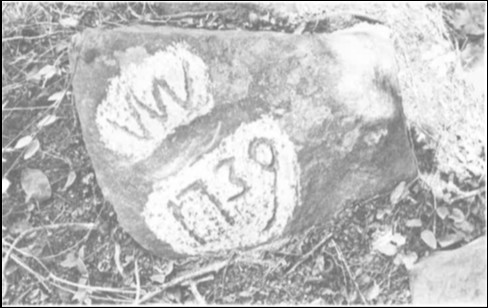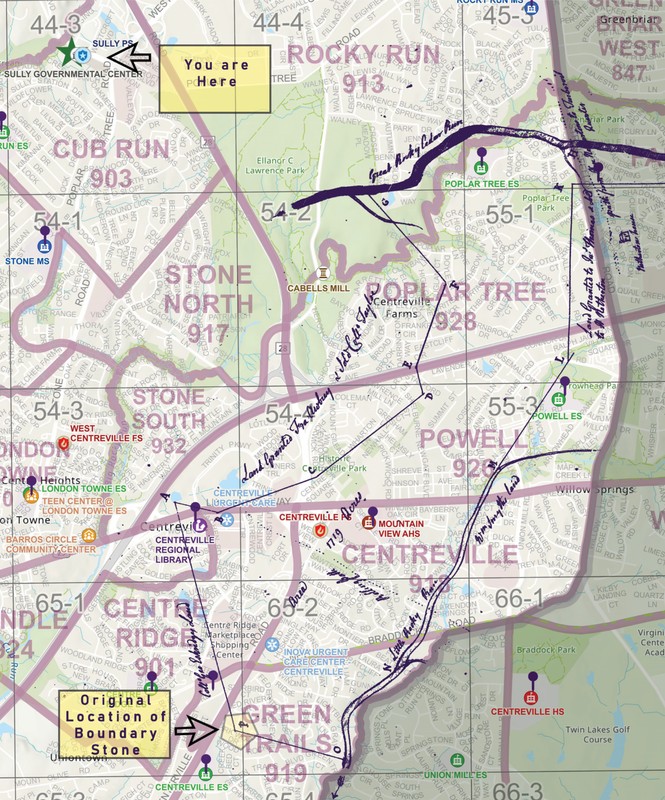Sully Government Center Exhibits including Willoughby Newton Boundary Stone
Introduction
Text-to-speech Audio
Images
Newton boundary stone in place where found.

1739 survey overlaid on modern map shows the orignial location of the boundary stone and the Sully Government Center.

Backstory and Context
Text-to-speech Audio
Willoughby Newton was Centreville’s first real estate developer. He owned more than 6000 acres, much of today's Centreville. Newton gave some of his land to his children, some of whom settled in the area. Newton also built ‘quarters’ to house enslaved workers who worked the land directly for him, raising cash crops such as tobacco and apples for hard cider. He sold land to entrepreneurs interested in establishing businesses along the Mountain Road (today Braddock Road) such as William Carr Lane and the Newgate Tavern. And he leased land to farmers. These tenant farms included a dwelling house, tobacco house, and an orchard. Rents were paid in tobacco. One such farm was leased to Thomas Brown near today’s Ellanor C. Lawrence Park, another farm was leased to Richard Omohundro who may have built Level Green.
Newton amassed his holdings over a period of years, ordering surveys as parcels were added. He asked suveyors to mark the boundaries of his land with stones carved with his initials. Local Boy Scouts found the one on display here in 1971 on the property of Mattie Gaskins Brown near today’s intersection of Darkwood Drive and St. Timothy’s Lane, marked “WN 1739.” Mrs. Brown donated the stone to the Historic Centreville Society which has loaned it to the Sully District Supervisor.
Sources
Virginia Room, Fairfax County Library. Vertical file, Newton Boundary Stone.
Eugenia Smith. Centreville, Virginia: Its History and Architecture. Fairfax County History Commission: Fairfax VA, June 1973.
Debbie Robison. The History and Significance of Centreville, in Northern Virginia History Notes. Accessed via website 6/21/2020: http://www.novahistory.org/Centreville_History.htm
Virginia Room, Fairfax County Public Library.
Author
